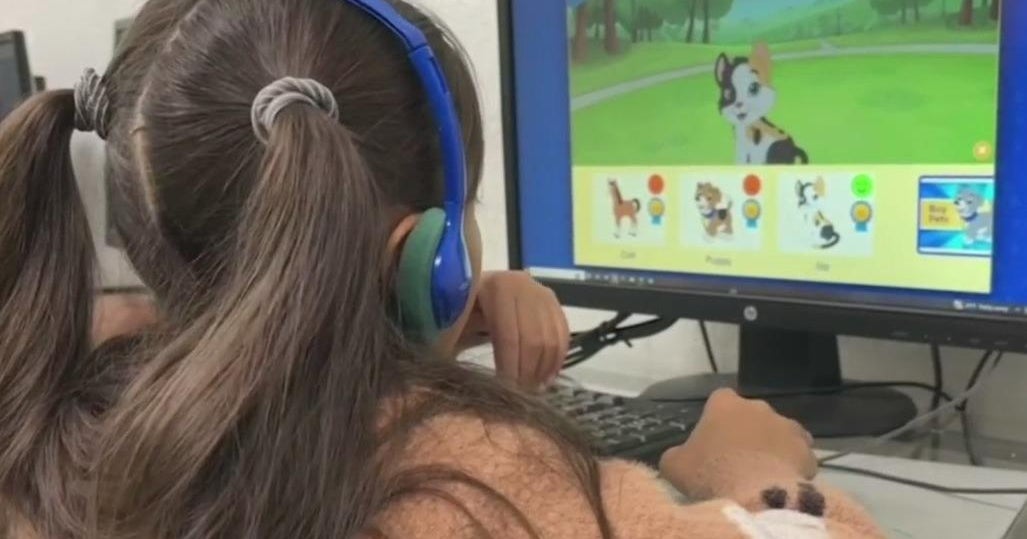Dyslexia, Learning Disabilities, Processing Disorders And How To Help Your Child
Symptoms of probable processing disorders:
Learning to recognize some of the signs that are contributing to your child's diagnosis, or simply the outward manifestation of these struggles, are important at home and in the classroom. Children want to learn - period!
This is a natural human tendency and should occur spontaneously throughout childhood unless there are difficulties preventing the easy assimilation of information. Children avoid or devise tactics because of struggles that they themselves do not understand or cannot articulate properly. These problems could just be due to "too much" information and requirements that are part of the pressure of schoolwork in this time and age. Third grade and sixth grade years are particularly difficult times as school work demands become more stressful, affecting self-esteem and motivation. But more likely or together with this "overwork drive" and the sometimes brief explanations that our teachers are able to give (teachers are also under pressure and don't always have the time to focus on each individual child) there are "red flags" that are the clues that can tell us that our children may be struggling.
Examples may be some of the following: your child complains of headaches, tired/hurting or weepy eyes, rubs eyes, upset stomach (especially when test time comes around), impulsive or distractible behavior, daydreaming, exhibits avoidance tactics ("I need to go to the bathroom; or sharpen my pencil "), can't sit still, lays head on desk when reading or writing, performs below potential, disorganized, work takes a long time to complete, poor memory for details…etc.
There are different phases of information assimilation that are equally important: seeing or hearing information relies on the physical capability of crisp vision or sound detection. But both of these skills also rely on automatic perception (picking and choosing information properly or prioritization), processing (the understanding of the information "I get it "), and the application (motor planning of these input stimuli).
VISUAL / AUDITORY / TACTILE perception and processing are all inter-related. These skills are dependent on foundational skills having been acquired, such as eye-hand coordination, gross motor integration before age 5, with the then fine motor transition as a child matures from age three and above; through correct dominance priority, strong right and left brain maturity, and natural reflex integration.
Visual academic checklist: Do they skip words when reading, or reverse letters/words? Despite being "smart", do they test poorly or have started to have failing grades? Do they lose their place when reading or do they have to repeat information? Holds material closer or farther than normal? Forgets the information a few days later even though they seemed to know it before? Do they persist on using their finger to read or preferring to read out loud, even in later grade? Omits or confuses small words? Do they start to yawn when reading or when doing math? Skips some words at the beginning or end, or states that the information does not make sense (vertical and horizontal tracking issues)? Grips pencil/pen too tightly (presses too hard on paper) or grips in a strange manner? Sloppy/too big handwriting or uneven spacing? Can they make sense from both left and right sides of the paper or environment (eyes versus body midline crossover or peripheral/frontal information)?

Auditory academic checklist: They hear, but seem to forget easily or do not follow multi-step directions appropriately. They do not respond to directions quickly. Speech is altered or not well articulated (oral expression and/or spelling skills may be weak). Early delayed speech or articulation. They seem distracted or act disoriented? They tilt or turn their head when listening. They have trouble in organization and they may forget to bring in their homework or copy their assignments from the board (this may also be related to visual processing).
Tactile academic checklist: They may be clumsy or lack coordination in running, or they may be very athletic. They may have difficulty sitting still/they may daydream ("spacy") or have avoidance behaviors in school and/or at home. They may be fidgety. Writes too big or uneven; no spaces between words when writing (proprioception feedback from hand or eye-hand coordination problem). Poor writing and spelling skills (also may be related to visual and auditory processing). Constant touching of things; gets too close to other kids, or vice versa of not wanting to be touched as much. They may start to show low self-esteem and low motivation issues.
The important key to remember is that these observations are not just coincidence - they are parts of the whole child that is struggling. To maximize your child's potential, all areas should be addressed. This is why at Brain Balance ®, we perform a compete assessment prior to accepting any child into our program in order to know your child on an individual and comprehensive level and to improve as many functional areas as possible in order to maximize your child's gains and result in long lasting changes.
Brain Balance of Miami is a part of a comprehensive, drug-free, and proven approach that targets all of these difficulties because our procedures go to the root cause of these difficulties. Whether your child has been formally diagnosed, or whether they show some of these signs, it is important to not just work with a child's strengths or provide strategies to compensate for a weakness, but to address the fundamental problem. We use specific body and brain exercises along with nutrition/digestive support to overcome the foundational causes of these symptoms. The Brain Balance ® individual approach has a 15+ year track record of helping children from 4-17 years old overcome their behavioral, academic and/or social challenges. By targeting these difficulties through fun, learning exercises/activities, we improve the coordination and harmony between both sides of the brain responsible for these signs and improve maturity by addressing any foundational learning gaps in the areas.
Processing Disorders
Processing disorders are caused by a deficiency in a child's ability to effectively use the information gathered by the senses. The problem is not the result of impaired hearing, impaired vision, intellectual disability, or attention deficit, but is a result of a brain's inability to properly process the auditory, visual, or sensory information it receives. This results in a child experiencing failure to learn and excel in an academic setting, often leading to frustration and low self-esteem. These children may also act out due to this frustration, causing them to be labeled a "behavioral or disruptive child."
These processing disorders may present as one or a combination of the following:
Auditory Processing disorder - hearing processing characterized by struggle to understand speech in a group or noisy environment (misunderstood verbal instruction in a classroom), failure to follow directions (possibly they may be disorganized), mixing up similar speech sounds, all of which may lead to slow task completion.
Visual Processing disorder - interpretation of what is seen. These children may struggle to differentiate between size, shape, and color of objects. They may confuse written symbols like those used in calculations, they may misjudge distance, and have poor spatial awareness (often being rough or bumping into things despite normal vision tests).
Sensory Processing or sensory integration dysfunction - These children experience difficulty with multi-sensory input showing oversensitivity, or at times under sensitivity to their environment (ex. covers their ear because "it's too loud "). They may show quirky behavior; they may be particular about their likes and dislikes. Children who are hypersensitive may show fears to things (light, noise, smells, touch) that most people consider normal. Children with hyposensitivity may show high tolerance to pain, or may be fidgety, or frequently want to touch things or other people, leading at times to rejection by classmates. They may be risk takers (thrill seekers for the stimuli they need) or act out as clowns to get attention.
Specific Types of Learning Disorders
Learning Disorders are a group of disorders that inhibit the brain's ability to receive, process, store, respond to, and communicate information. Most children with learning disorders have average to above-average intelligence, but often process information differently than others, which can lead to issues in the classroom as well as at home or in social situations, eventually affecting self-esteem and interpersonal relationships.
Dyslexia - which is a reading disorder characterized by difficulty recognizing letters, learning letter sounds, and identifying rhyming words. These children may also exhibit delayed language development and have trouble with spelling and writing.
Dysgraphia - distorted and incorrect handwriting along with other fine motor skills. They usually show strong verbal skills to compensate for their writing issues and may even be strong readers.
Dyscalculia - children with this issue may have difficulty with learning fundamental basic numerical skills. Often they can understand complex math concepts, but have difficulty processing formulas or basic addition and subtraction. They may also struggle with visual-spatial relationships or processing information they hear.
Dyspraxia - (or Apraxia) is a condition characterized by a difficulty in carrying out routine activities involving balance, fine motor control, and kinesthetic coordination. Signs may be noted as not meeting their normal milestones, or clumsy or uncoordinated movements.
Verbal Apraxia - is characterized by struggles with speech, possibly due to delays in development of the area of speech production of the brain.
Since the left hemisphere of the brain controls learning and processing of information, a person with under activation or decreased left brain activity may exhibit the above signs. The Brain Balance approach combines individually customized sensory motor and academic activities that improve left-brain connectivity leading to increased processing and learning skills. We use what we learn in the Personal Assessment Testing to set up your child's program regimen. This is a drug-free and integrated approach that efficiently works on these deficits, based on the areas of greatest need and fine tunes functions and skills in your child.
Every child deserves the opportunity to reach their fullest social and academic potential!
Call today at (305) 665-9444 or email brainbalancemiami@att.net to get started. Brain Balance Miami is located at 6836 SW 40th Street (Bird Road), Suite B (Ludlam Plaza). You can also go on our website and fill out a brief questionnaire to find out if your child is a good candidate for our program www.brainbalancecenters.com.
Above content provided by Brain Balance Center of Miami.



